Example 2 with Scripts
Example 2 with Scripts
% $VOVDIR/training/art_of_flows/example2/script2_1.csh
% $VOVDIR/training/art_of_flows/example2/script2_2.cshExample 2 with make
% make allExample 2 with FlowTracer
% vovbuild
% vsr -all% vovexport -make
% vovexport -csh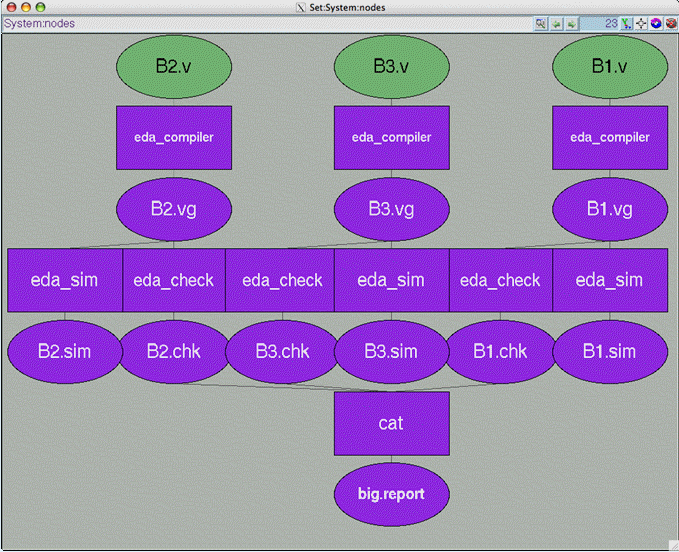
Figure 1. Flow is built
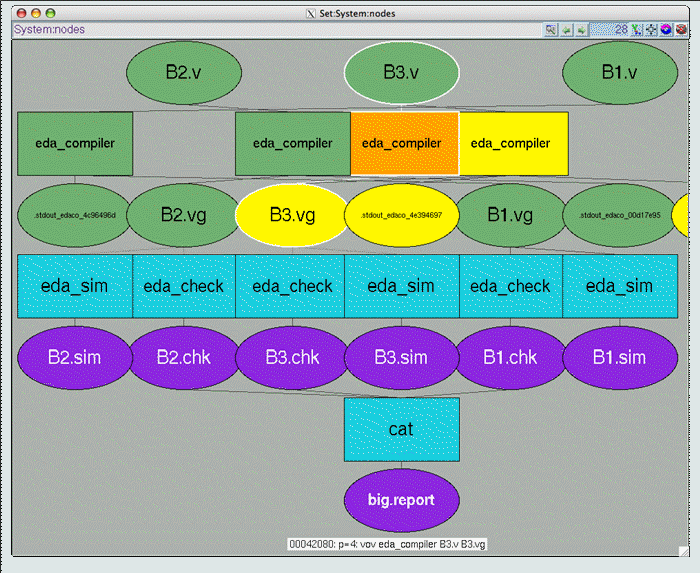
Figure 2. Flow is running
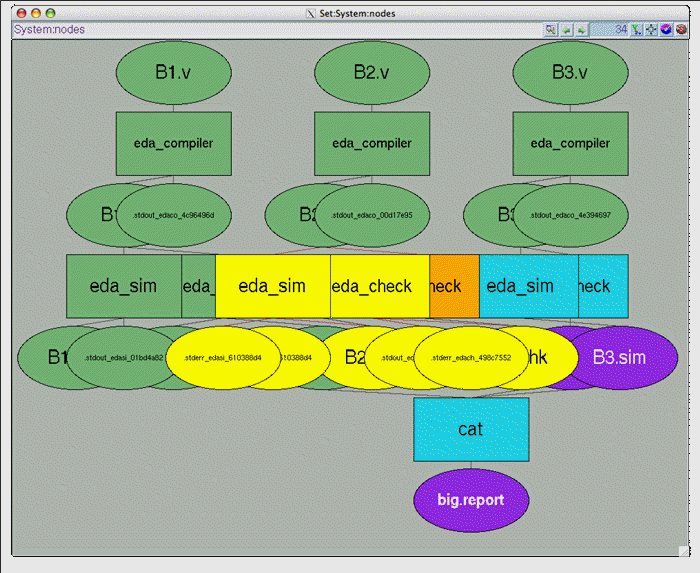
Figure 3.
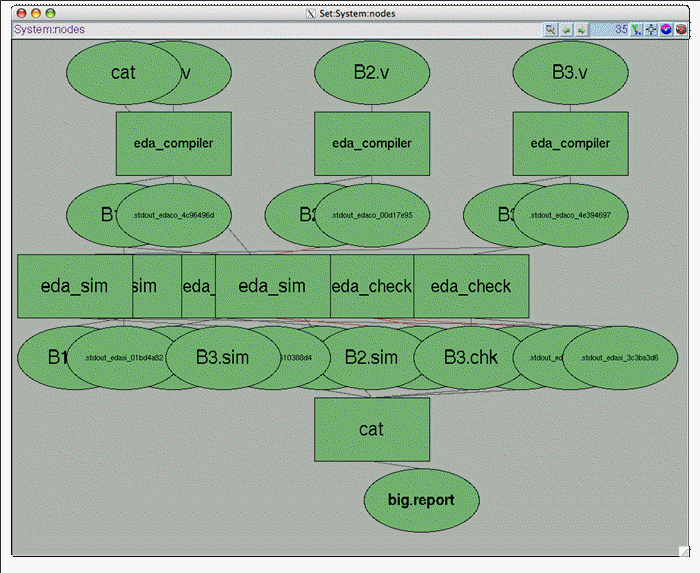
Figure 4. Flow is done
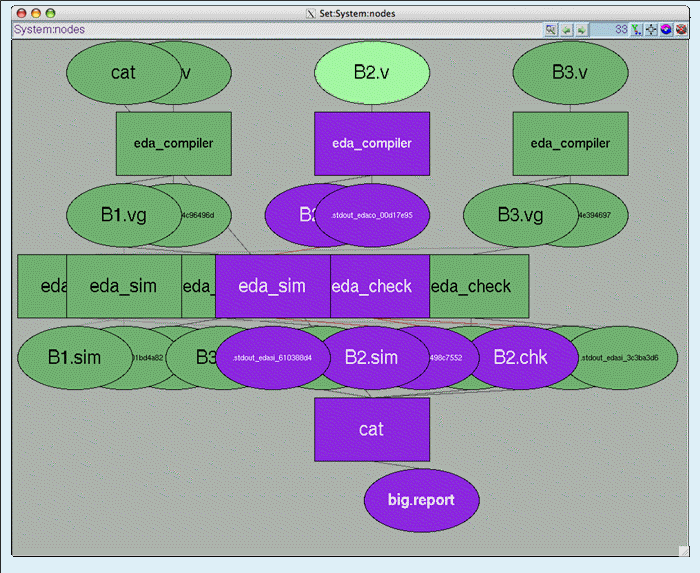
Figure 5. Flow is changed
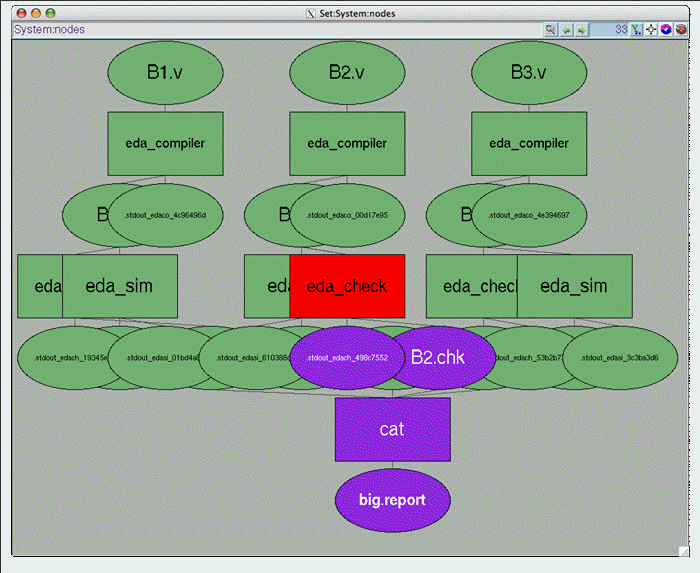
Figure 6. Flow is failing
Example 2 with Makefile and FlowTracer
- The skipping of the targets 'all' and 'run'
- The use of the wrapper vw for most other targets
- The use of the environment EDA1
% vovforget -allnodes ; if necessary, to cleanup the old flow.
% vovmake% vovexport -make
% make -f Makefile.vov clean
% make -f Makefile.vov all